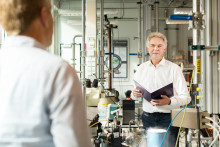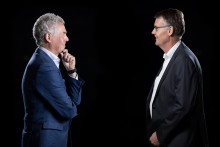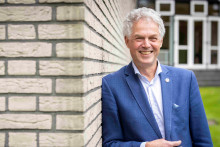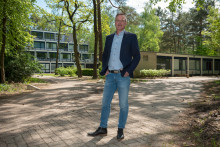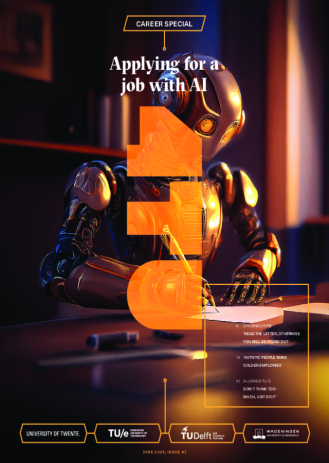‘I have had a few eureka moments over the course of my scientific career. Looking back, they always happened while I was working together with close colleagues, never while I was by myself. In the eighties, for example, I worked as a postgraduate at Bell Labs, a renowned laboratory in the United States. To give you an idea: Bell Labs researchers have won nine Nobel Prizes over the years. Collaboration was part of the institute's DNA. I learned to collaborate very effectively with excellent people, which was a crucial factor in the eureka moments I would experience later on.'
'At that time, it was believed that oxydic materials, i.e. connections between oxygen and other elements, were always isolators. However, some oxides can have metallic properties. In those metallic oxides, superconductivity – better known as high-temperature superconductivity – was discovered in 1986. This discovery won the researchers a Nobel Prize and would revolutionise our technology, because being able to transport electricity without resistance means you can develop extremely efficient engines and generators and transport energy without any losses along the way.'
'While I was researching those materials at Bell Labs, I noticed that the resistance of the metallic oxides in magnetic fields is actually not zero at all. I looked for an explanation for months, until we got a visit from Bertrand Halperin, a theoretical physicist from Harvard University, who casually told me to look at my theoretical models from a different perspective. I remember exactly where I was at that moment. Room MH-1E-318. He gave me an insight, based on theory, that allowed me to look at and analyse my own measurements in an entirely new way.'
'Suddenly, everything came together. We finally understood why these superconductors have a finite resistance in a magnetic field. As a result, I was able to explain the limitations of high-temperature superconductivity. I demonstrated that the superconductors, despite their amazing potential, would only have a technological impact in specific circumstances and that the realisation of this impact would take much longer than we had previously imagined.'
'This was big news in the scientific community. A lot of people struggled to digest it. I gave a lecture in Japan, which had recently invested heavily in this field. After the lecture, I was not invited back to Japan for a few years. Another example is a conference with about a thousand people in the room where I would present my insights. I was told in advance by a colleague: if you reveal your model here, your career will not end well. I had to swallow for a moment. But I also thought: it is now or never.'
'Nevertheless, it worked out well for me. “If you are not afraid of stepping on that colleague’s toes, you are made of the right stuff,” my group leader at Bell Labs told me. As a postgraduate with only a year left at the laboratory, I was looking hard to find a new job. My eureka moment had a happy end after all: I was able to stay on at Bell Labs as a researcher for several years.’


